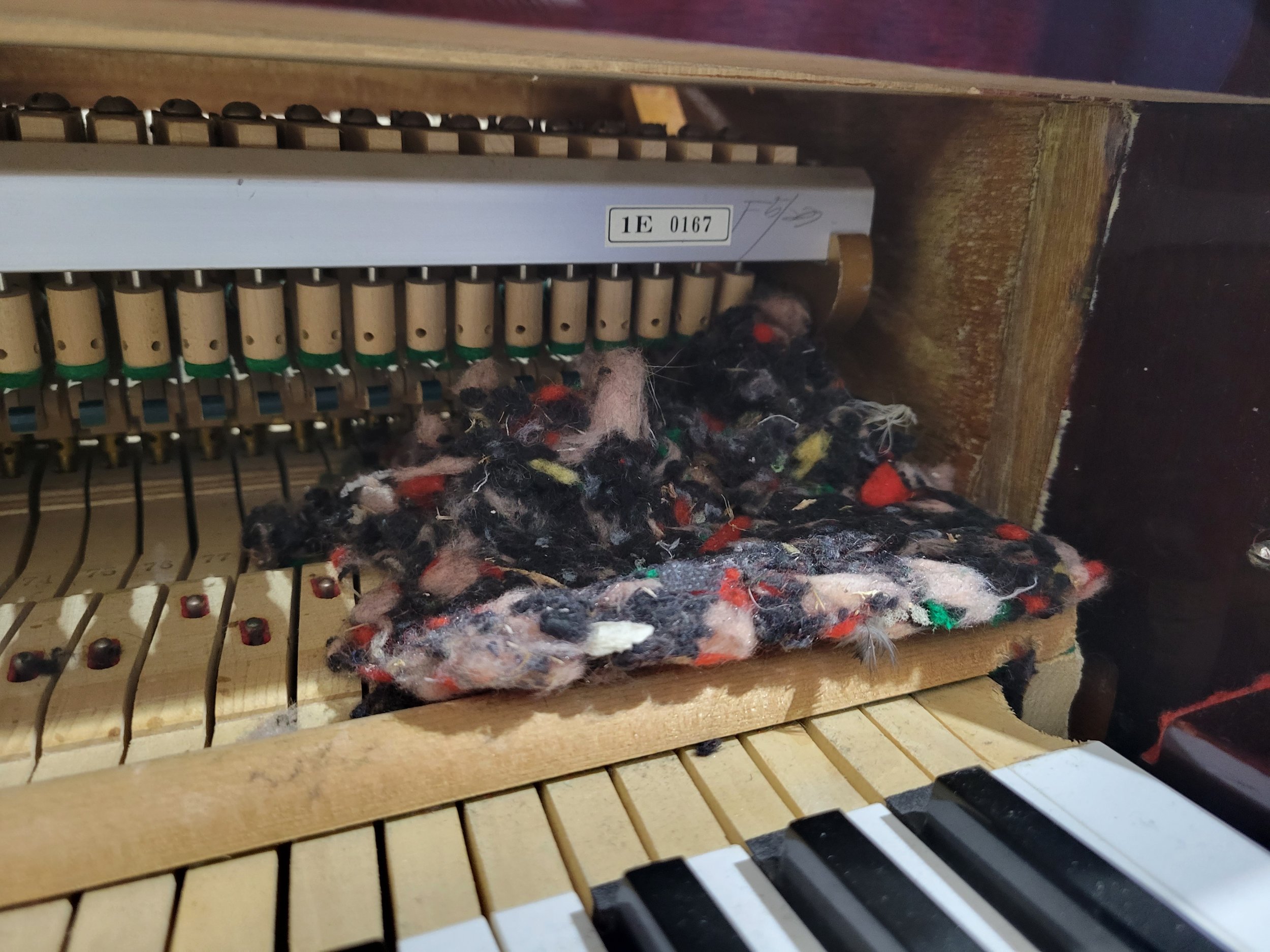Gallery
Examples of my work
Lakeview Weddings Yamaha GB1K
A customer’s 1890’s Steinway B
Dominican Sisters of Springfield, IL
An upright in the midst of regulation. In this case, it was a full-day session.
Both a mouse and a snake made their home in this piano at one point!
When replacing broken strings, it’s important that the string coils are snug and the tuning pins are all level with each other. In this case, I did not end up replacing any tuning pins.
The bridge of the piano, which transfers the energy of the strings to the soundboard, needs to be solid in order for your piano to have a good tone. This crack is to the point of requiring a bridge recap or replacement, which will cost thousands of dollars.
This may be the largest bridge crack I have ever seen. Practically half of the bass section that this encompasses is dead as far as the tone is concerned. This happens when the piano is subjected to extreme swings in humidity.
Pontiac High School’s Baldwin D
A church’s Steinway B
A customer’s Yamaha C6 that used to belong to Chick Corea
An 1870’s Decker Bros. grand
The action from the Decker Bros. grand in the above picture. This action required more than a day’s work and needed to be brought back to the shop.
It is unfortunately too common to find mice nests inside pianos, as pianos have lots of felt and wood that they love to eat and chew up.
In some upright Asian pianos, the return of the hammer after being played is aided by this spring seen here. The spring is supposed to be held down by a cord made of silk or cotton (in the picture, it appears brown). This cord can commonly break, and needs to be replaced.
Cracks such as these are much more manageable, and are capable of being repaired.
Key tops can occasionally come unglued or otherwise need to be replaced. It can be as simple as a field repair the day I come to work on them, or it may require taking the keys back to my shop or shipping them to a specialist that can put a whole new set of key tops on.


















